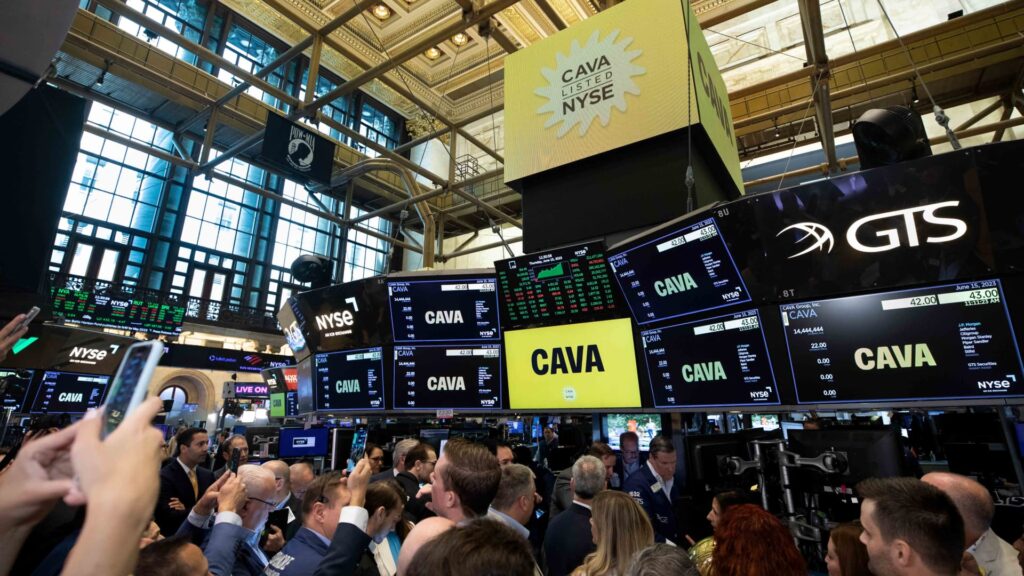
CNBC’s Jim Cramer on Friday told investors there’s more upside in Cava, as long as the Mediterranean fast food outfit’s regional-to-national expansion plans are on track.
“Even if the market rolls over and Cava pulls back again, then I’d once again view that as an opportunity to build a position — just like when I told you to buy the stock back at $77 in April,” he said. “Despite the handwringing about the economy, I’ve not seen anything to make me believe that Cava can’t still become the great next story… maybe the next Chipotle.”
Cava posted quarterly results Thursday after close, reporting better-than-expected sales and comfortably topping earnings estimates. However, investors bristled at some aspects of the company’s outlook. Cava reiterated its same-store sales forecast, but Wall Street had hoped it would raise the metric. Investors are broadly worried about the restaurant industry as they brace for the economic repercussions of President Donald Trump’s new tariffs. Cava saw a choppy day of trading Friday, with shares ultimately closing down 2.27%.
Cramer said he wasn’t too worried about Cava’s pullback because the stock had run up so much into the quarter. He was mostly pleased with the results, saying expectations for the chain were very high after its “incredible outperformance” last year. Cramer was encouraged that management said it planned to open more new locations this year than previously expected. He was also satisfied with Cava’s new marketing campaigns and the growth of its loyalty program.
Cramer recommended owning Cava for the long term, saying opportunity for the company is much larger than its current $11 billion market cap. He called the stock a “compounder,” a company that is expected to grow steadily over a long period of time. He said investors can start a position if they are able to tolerate some volatility.
“I do have one caveat, though: because Cava’s a high…price-to-earnings multiple name, its stock will do very poorly if we get another big, what’s known as ‘risk-off’ market environment,” Cramer said. “It’s a term I don’t like, but it means that investors want to shy away from risky stocks, and that’s what we saw, say, from February through mid April.”
Cava did not immediately respond to request for comment.


